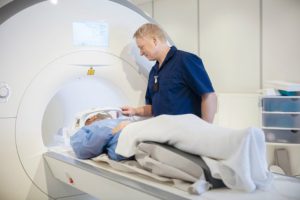A Brief Overview of Magnetic Resonance Imaging (MRI)
Magnetic Resonance Imaging (MRI) is a revolutionary procedure used to scan patients for an accurate evaluation of ailments and injuries. Many doctors are now depending on MRI for their diagnosis, since it provides detailed images of the involved body parts through the use of a magnetic field and radio waves.

A Brief Overview of Magnetic Resonance Imaging (MRI)
Magnetic Resonance Imaging (MRI) is a revolutionary procedure used to scan patients for an accurate evaluation of ailments and injuries. Many doctors are now depending on MRI for their diagnosis, since it provides detailed images of the involved body parts through the use of a magnetic field and radio waves.
An MRI machine is a long tube with the inner circular area comprising of a large magnet. The patient lies down and then a technician extends a coil, which receives the magnetic resonance signal, to the area that needs to be imaged.
Distinction between MRI and X-ray or CT Scan
MRI is completely different from X-ray or CT scanning. For starters, there’s no fear of ionizing radiation with a MRI. Its technology also allows it to detect fractures so small that they do not show up in traditional X-rays. Using MRI scans; doctors can identify the cause of pain as well as the exact condition, location and severity of fractures. Injuries in the muscles, tendons, joints and soft tissues of ligaments are also spotted in this procedure. Doctors can look closely at the tissues in the various body organs and immediately be made aware of any irregularity, such as a tumour. By being able to correctly identify the source and cause of anomalies, the right treatment can be implemented as early as possible.
When Do You Need a MRI?
A MRI machine provides detailed images, which allow the doctor to better assess the different parts of the body. This is to determine whether certain diseases that cannot be evaluated properly and adequately – using other imaging methods such as x-ray, ultrasound or CAT scan – exist. Magnetic Resonance Imaging, it should be noted, does not use x-rays.
MRI is very useful when scanning the brain or spinal cord. Most neurosurgeons use this machine in scanning and defining the brain anatomy. MRI scans can show any swelling or bleeding in any regions of the brain.
MRI is useful in determining brain aneurysm, strokes, inflammation in the spine, multiple sclerosis or whether the brain suffers from lack of oxygen after a stroke. It is also used in evaluating any spinal cord trauma and development of any heart defects.
How does it Work?
Magnetic Resonance Imaging works by creating a strong magnetic field from the electric current passing through wire loops. During this time, other coils work by sending and receiving radio waves, which trigger the protons in the body to align and then absorb radio waves. The process stimulates spinning, causing energy to be released and emit signals picked up by the coil. The information is transmitted to a computer, which generates an image based on the signals it interpreted. All this produces a 3D image representing the area being studied.
The MRI procedure does not take up too much time, and after a scan, patients can take up their regular activities. It also does not require patients to take medication. It is very safe and has no reported side effects. However, since a magnetic field is involved, MRI scans are not recommended for patients with implants such as pins, rods, pacemakers etc. since it can move metal and have these objects dislocated. Metal components in the body can also affect the accuracy of the scanned images.
If you have any questions regarding a MRI procedure, please feel free to post a comment or give us a call as we are always happy to answer your questions.
Read our articles and FAQs
We’re delighted to provide updates on the latest medical imaging technology and answer your most frequently asked questions about our services.









